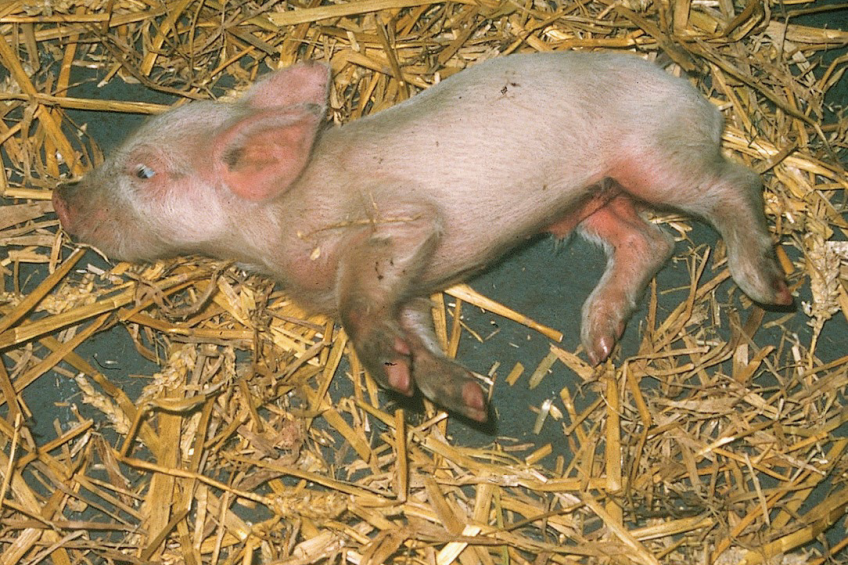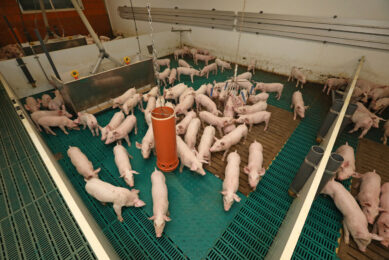China’s battle to control pseudorabies

Many swine-producing countries have eradicated the presence of pseudorabies, also known as Aujeszky’s Disease. China on the other hand has experienced an unprecedented outbreak since 2011. Vaccination proves to be an important tool to control PRV.
Pseudorabies virus (PRV), the causing agent of Aujeszky’s Disease, is an extremely contagious herpesvirus that causes respiratory disease and reproductive problems, including abortions and stillbirths in breeding swine. In piglets, PRV can cause coughing, sneezing, fever, constipation, depression, seizures, ataxia, circling and excess salivation, with mortality in piglets less than one month of age being close to 100%. Occasional death losses in breeding and finishing pigs can also occur. The virus is transmitted through nasal and oral secretions, food, water, and the environment. It can also be carried on vehicle wheels, including tyres or buggy wheels, boots and clothing.
The incubation period is commonly two to five days, with nasal and oral excretion and, in adult swine, vaginal, preputial, and/or milk secretion coincident or just preceding any primary symptoms. Additionally, adult Aujeszky positive swine may harbour the virus without showing clear signs. The virus can live in humid air and non-chlorinated water for up to seven hours; and in the soil, on clothing, and faeces for up to two days. Dogs, cats, and raccoons can physically transmit the virus between farms, but usually the virus causes death in these animals. PR viruses comprise a single serogroup. However, both vaccine and wild-type viruses can be differentiated into groups by using combinations of physical and biological markers.
Global PRV prevalence
Aujeszky’s Disease can be found throughout the world, especially in regions with dense swine populations including South America, Asia and Europe. Countries such as Germany, Austria, Sweden, Denmark, the United Kingdom, Canada, New Zealand and the United States have eradicated the disease from their domestic swine populations in the late nineties.
Culling of seropositive animals without vaccination in regions with a low pig density or intensive vaccination with gE-negative marker vaccines followed by culling gE-seropositive animals in regions with a high pig density allowed several European countries to become free of PRV. Vaccination with modified live marker vaccines is a useful tool in controlling the disease and PRV has been eradicated in many countries by the use of modified live vaccines.
Chinese members of staff vaccinating against pseudorabies.
Occurrences of PRV in China
In Asia, the first report of a PRV outbreak occurred in China in the 1950s. Later, the disease was reported emerging in other Asian countries, including Thailand in 1977. As of 2011 an unprecedented large-scale outbreak of disease in pigs in China caused great economic losses to the swine industry.
The disease outbreaks were observed first in the Jiangxi and neighbouring provinces, but spread eventually from the North to the South of China. Various investigations from leading researchers confirmed that the pathogenic pseudorabies virus was the etiologic agent of this epidemic.
Study in Henan
A study was subsequently performed by scientists from Henan province, who investigated a total of 16,800 serum samples from the outbreak region. In addition, they investigated 905 back-feeding tissues that were used in a concurrent PED (porcine epidemic diarrhoea) outbreak in that region and also related in huge economic damage. Moreover, 56 modified live marker vaccines were examined for virus titre, and vaccine potency.
The diagnostic PR-gE ELISA is a convenient way to detect wild-type PRV infection as it can distinguish infection of wild-type virus from vaccination. The result of this compelling study showed that the detection rate of PRV field infection-positive pig farms was 68.06%, and the overall positive rate of PRV field infection in serum was 38.47%; the positive rates in breeding sows, breeding boars, replacement gilts, and commercial pigs were 40.12%, 30.88%, 54.67% and 26.52%, respectively. The PRV strains isolated were in the same evolutionary branch and belonged to the virulent strain group. Compared with the classical PRV strain, the virulence of these strains changed little. It was also shown that commercial vaccines were highly efficacious against the newly emerged strains. The scientist found another interesting fact: in farms that used modified live PRV vaccines only, there was no field virus detected, but in farms where there was a concurrent ‘PED treatment’ with back-feeding tissues the positive rate of PRV field virus was 40.44%.
Study in Jiangxi
An interesting study from Jiangxi province provide results from a serological investigation that encompasses 25,149 serum samples (from sows, boars, sucking piglets, wean to finish pigs) collected from January 2010 to June 2014 from different farms of different sizes. The results clearly show that before 2012, only around 70% of these farms vaccinated with pseudorabies vaccine, and many of them only injected breeding herd one to two times a year, and no vaccination for suckling and wean-finish pigs. After 2012, the vaccination rate got close to 100% and most farms injected three to four times a year in breeding herds, while using intranasal vaccination for new born piglets plus a booster at eight to ten weeks of age. All vaccines used were PR-gE negative, a so-called DIVA (differentiate infected from vaccinated animals). PR-gE antibody was tested by using ELISA kit from IDEXX and the positive rate of wild-type PRv infection was calculated.
The positive rate of PR-gE antibody in Jiangxi and nearby regions from 2010 to the June 2014 were 10.06%, 32.88%, 40.57%, 31.75% and 35.06, respectively, which showed an obvious increase of wild-type PRv infection from 2010 to 2012 and then decreased subsequently in 2013 and the first half of 2014 (see Table 1). Following implementation of vaccination the clinical signs (mainly nervous symptom in suckling piglets) were distinctly improved.
Eliminating PRV
Both the studies from Henan and Jianxi conclude that correct vaccination with modified live marker vaccines against PRV is an efficient way to control Aujeszky’s Disease that can eventually lead to elimination/eradication. The intranasal application of these vaccines of newborn pigs does not interfere with protective maternal antibodies and prevent a latent infection of the field virus. Intranasal vaccination is more effective than intramuscular administration by local replication and development of mucosal immunity. During acute infection, intranasal vaccine virus ‘occupies’ the trigeminal ganglia and prevents super-infection and thus reduces wild-type virus replication and shedding.
Vaccination schemes need to be accompanied by good biosecurity. The goal for a good biosecurity protocol is to keep out pathogens the herd is not exposed to and to minimise the effects of pathogens that are circulating in the herds. As dogs and cats are hosts of PRV, it is essential to control their access to the farms/herds. A number of disinfectants are active against PRV, however, when considering the role of other agents such as PRRS virus and PCV2, then it is best to use a proven broad spectrum disinfectant.
In conclusion, Aujeszky’s Disease is still prevalent in many SE Asian countries and a recent outbreak of the disease has resulted in enormous economic damage. However, when correct vaccination programmes are implemented together with appropriate biosecurity measures, it can be controlled.











